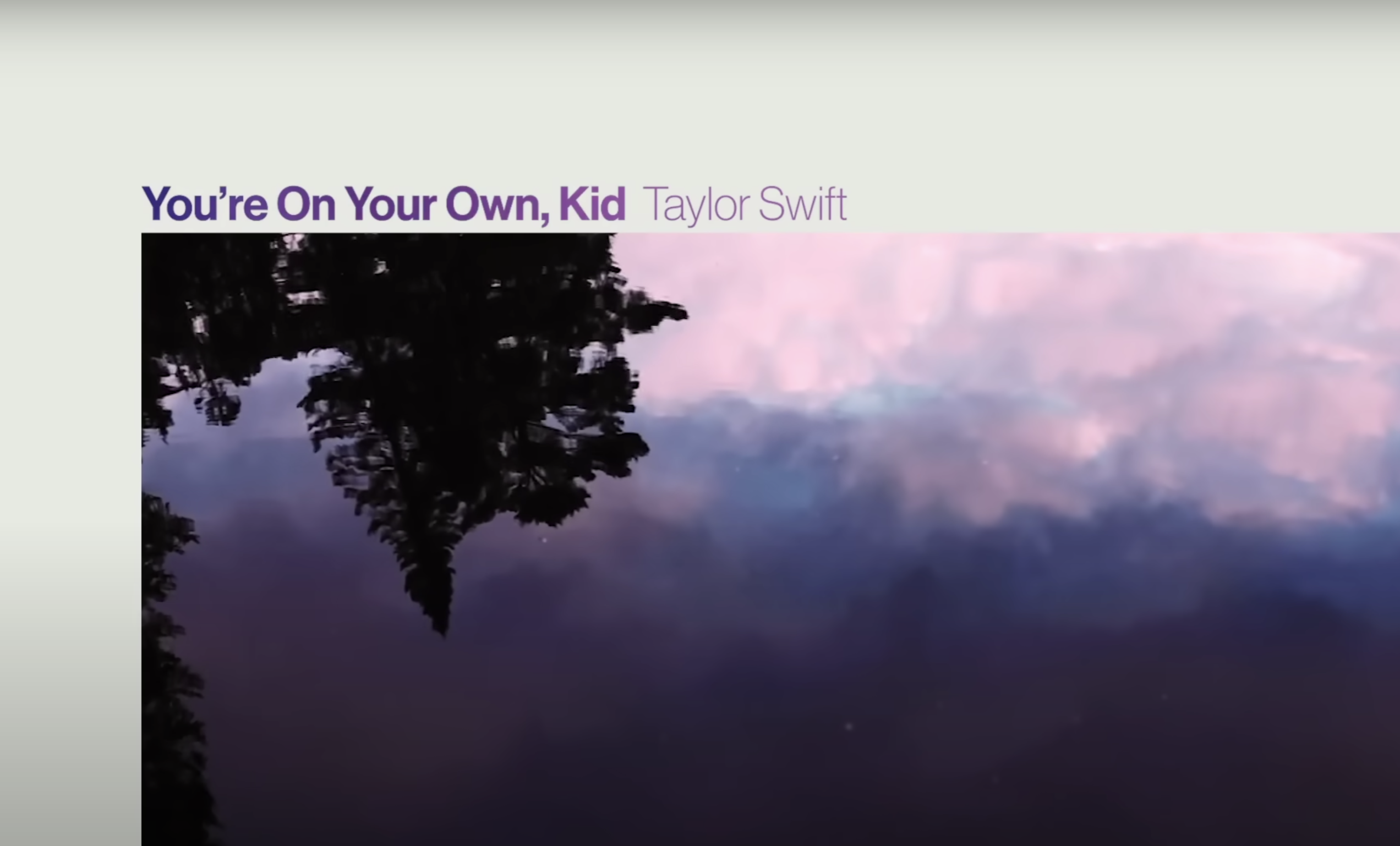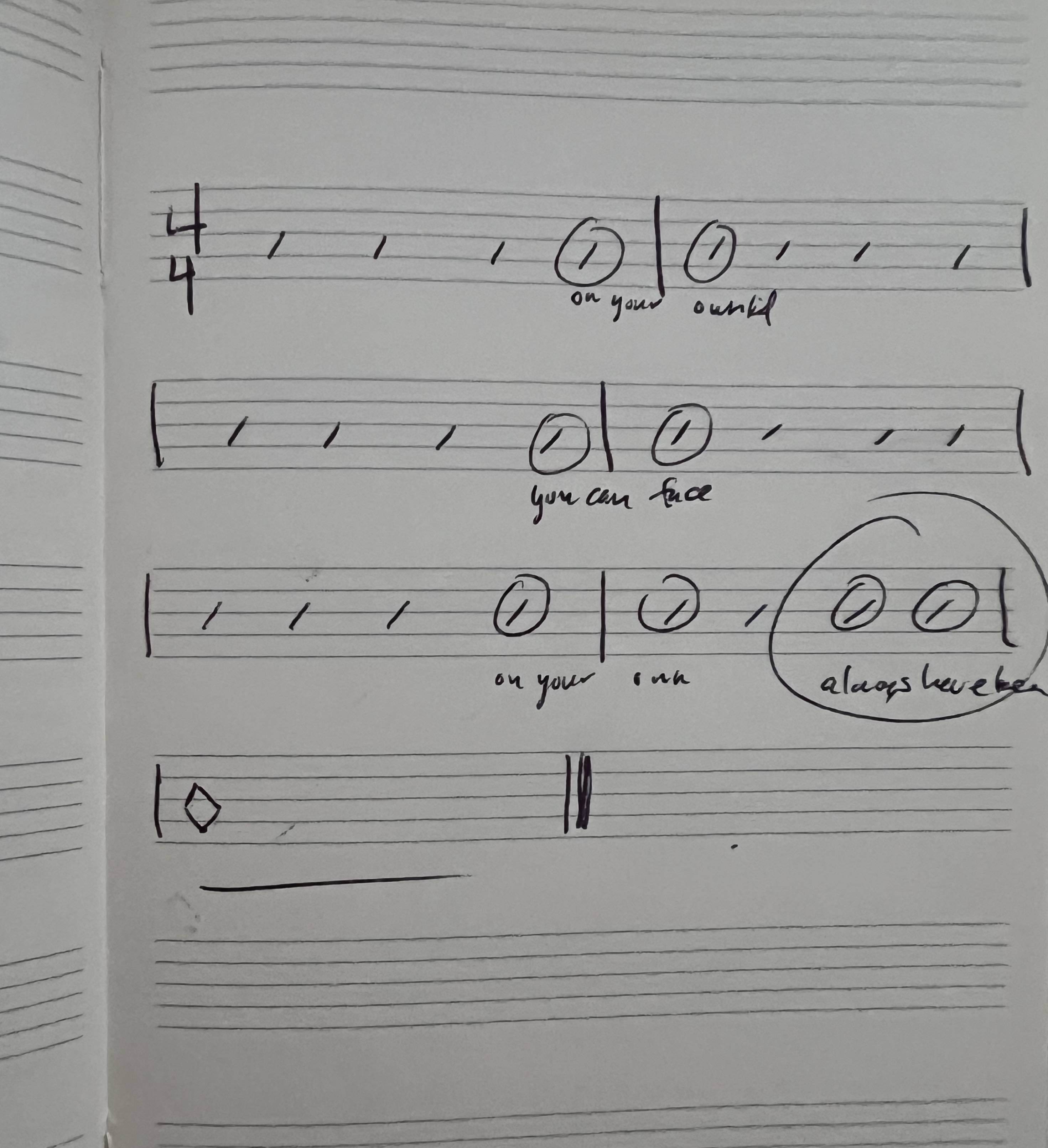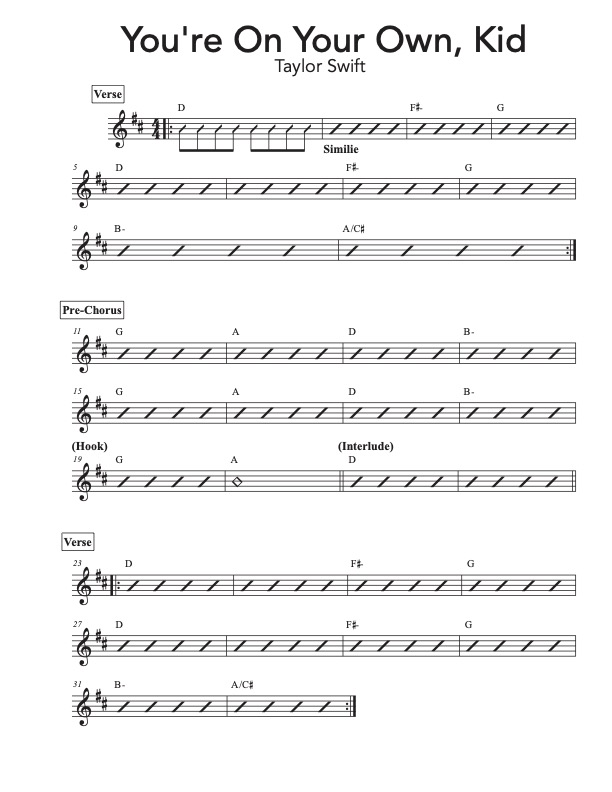You're On Your Own, Kid | Taylor Swift Free Sheet Music
Taylor Swift's musical evolution has been nothing short of extraordinary, and her album "Midnights" continues to showcase her creative versatility. One standout track, "You're On Your Own, Kid," is a captivating blend of nostalgia and contemporary emotions that takes listeners on a dynamic sonic journey.

Unveiling the Throwback Vibes
"You're On Your Own, Kid" begins with a subtle throwback vibe in the first verse. This harkens back to Swift's pre-teen days when skater rock dominated the scene. The reminiscence of this era sets the tone for a unique exploration of emotions and self-discovery.
Transition to the Adult Version
The transition from the first verse to the pre-chorus introduces modern elements that gradually immerse the listener in the adult version of Taylor Swift. The song serves as a musical mirror reflecting her personal growth and maturity. This transition is a perfect illustration of the realization she's experiencing within the song—that the emotions she's feeling now mirror those from her past.
Hook vs. Chorus
One of the most intriguing aspects of "You're On Your Own, Kid" is Swift's decision to utilize a Hook instead of a traditional Chorus. This choice adds a layer of uniqueness to the track, blending a touch of the old-fashioned with a fresh perspective. The arrangement carves out the hook in a clever way, creating a break from the continuous eight-note pattern that dominates the entire song up until this point. This divergence draws attention to the lyrics in that moment, which, coincidentally, also happen to be the song's title: "you're on your own kid, you always have been…"
Unconventional Song Structure
The song's structure takes an unconventional approach as well. Instead of placing a bridge where it's typically expected, Swift inserts a short instrumental section. What follows is even more intriguing. She repeats the pre-chorus four times with no hook, subverting expectations and creating a unique sense of progression. This is followed by the real bridge, although its melodic quality is more reminiscent of the melody a singer might ad-lib over a powerful chorus. The lyrical content and absence of a melodic counterline underneath make it feel more like a bridge, and Swift even drops the word "bridge" within the lyrics of this section—whether coincidence or intentional, it adds an interesting layer of depth.
Bringing back the tag ending
The song's conclusion embraces an old-school tag ending, where the last line is repeated three additional times to provide a sense of closure. Yet, this tag ending takes an innovative twist. Swift plays with rhythm displacement, adding another dimension to the "punchline" of the song. The rhythmic change in the tag's third repetition is particularly impactful.
The way that Taylor changes the rhythm in the tag the 3rd time is really powerful because the 1st 3 times the lyrics are squeezed into beat 4 of the 1st measure and beat 1 of the second. The last time it’s moved 5 beats earlier to be on beat 3 and 4 of the previous phrase, giving it a real “wrap-up” feeling, but it a pretty funky way.
Another way to put it is that you can count to 6 after the 1st phrase, 6 again after the 2nd phrase, and then only 1 after the 3rd. It makes the punchline of the song stand out so much “you always have been.” Which is kind of a gut wrenching lyric, so it really shines in it’s displacement from the pattern:

In the lead sheet below, I marked all the sections, including the implied ones (like “hook” and “hook - tag ending.”) Hopefully this will help you not lose your place. If you’re accompanying yourself, I would recommend jotting down some vocal cues (little pieces of the lyrics to remind you what section you’re at) throughout the lead sheet.

Also, make sure to check out the lead sheets to the rest of this album:
More fun facts about “You’re On Your Own, Kid” in case you’re really geeking out:
Title: You’re On Your Own, Kid
Writers: Taylor Swift and Jack Antonoff
Producers: Taylor Swift and Jack Antonoff
BPM: 120
Key: D Major
Duration: 3:14
Album: Midnights
Release Date: Friday, October 21st 2022
Record Label: Republic
Other Credits:
Taylor Swift: Vocals Songwriter Producer
Jack Antonoff: Songwriter Producer Programming Assistant Mix Engineer Percussionist Juno 6 Operator Mellotron Enthusiast Moog Maestro Electric Guitarist Bassist Background Vocalist Recording Engineer
Evan Smith: Synth Magician Recording Engineer Vinyl Mastering Specialist
Laura Sisk: Recording Engineer
Sean Hutchinson: Drummer Percussionist Recording Engineer
Megan Searl: Assistant Engineer
Jon Sher: Assistant Engineer
John Rooney: Assistant Engineer
Serban Ghenea: Mix Engineer
Bryce Bordone: Assistant Mix Engineer
Randy Merrill: Mastering Engineerf



